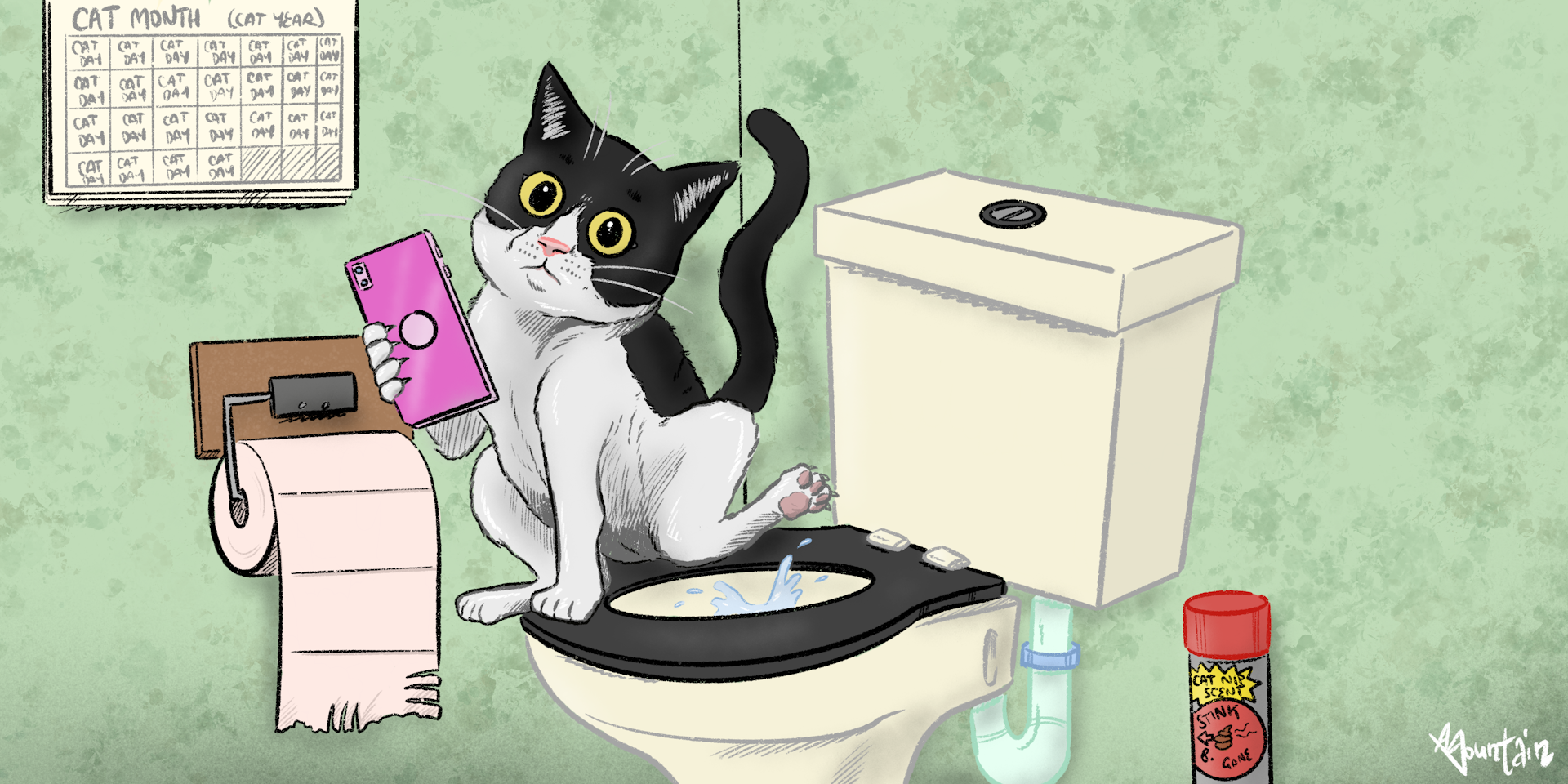Dangers of Flushing Cat Poop Down Your Toilet - Prevent Possible Problems
Dangers of Flushing Cat Poop Down Your Toilet - Prevent Possible Problems
Blog Article
We've stumbled upon this great article relating to How to Dispose of Cat Poop and Litter Without Plastic Bags directly below on the net and accepted it made perfect sense to share it with you on this site.

Introduction
As feline proprietors, it's essential to be mindful of just how we dispose of our feline good friends' waste. While it might seem convenient to purge pet cat poop down the toilet, this practice can have detrimental repercussions for both the atmosphere and human wellness.
Alternatives to Flushing
Fortunately, there are much safer and much more liable means to dispose of cat poop. Think about the complying with alternatives:
1. Scoop and Dispose in Trash
One of the most usual approach of disposing of cat poop is to scoop it right into a biodegradable bag and throw it in the trash. Make sure to utilize a specialized clutter inside story and throw away the waste without delay.
2. Usage Biodegradable Litter
Opt for biodegradable cat litter made from materials such as corn or wheat. These litters are environmentally friendly and can be safely dealt with in the garbage.
3. Hide in the Yard
If you have a backyard, take into consideration hiding feline waste in an assigned area away from vegetable yards and water resources. Make certain to dig deep sufficient to prevent contamination of groundwater.
4. Install a Pet Waste Disposal System
Invest in a pet dog garbage disposal system especially created for feline waste. These systems utilize enzymes to break down the waste, decreasing odor and environmental impact.
Wellness Risks
Along with ecological issues, purging feline waste can also pose wellness threats to people. Feline feces may have Toxoplasma gondii, a bloodsucker that can cause toxoplasmosis-- a possibly serious disease, particularly for expectant ladies and individuals with weakened body immune systems.
Environmental Impact
Flushing feline poop presents unsafe microorganisms and bloodsuckers right into the supply of water, posing a substantial risk to marine environments. These contaminants can adversely affect aquatic life and compromise water top quality.
Final thought
Responsible pet dog ownership expands beyond providing food and shelter-- it additionally includes correct waste administration. By refraining from flushing pet cat poop down the bathroom and going with alternate disposal methods, we can lessen our ecological footprint and shield human wellness.
Why Can’t I Flush Cat Poop?
It Spreads a Parasite
Cats are frequently infected with a parasite called toxoplasma gondii. The parasite causes an infection called toxoplasmosis. It is usually harmless to cats. The parasite only uses cat poop as a host for its eggs. Otherwise, the cat’s immune system usually keeps the infection at low enough levels to maintain its own health. But it does not stop the develop of eggs. These eggs are tiny and surprisingly tough. They may survive for a year before they begin to grow. But that’s the problem.
Our wastewater system is not designed to deal with toxoplasmosis eggs. Instead, most eggs will flush from your toilet into sewers and wastewater management plants. After the sewage is treated for many other harmful things in it, it is typically released into local rivers, lakes, or oceans. Here, the toxoplasmosis eggs can find new hosts, including starfish, crabs, otters, and many other wildlife. For many, this is a significant risk to their health. Toxoplasmosis can also end up infecting water sources that are important for agriculture, which means our deer, pigs, and sheep can get infected too.
Is There Risk to Humans?
There can be a risk to human life from flushing cat poop down the toilet. If you do so, the parasites from your cat’s poop can end up in shellfish, game animals, or livestock. If this meat is then served raw or undercooked, the people who eat it can get sick.
In fact, according to the CDC, 40 million people in the United States are infected with toxoplasma gondii. They get it from exposure to infected seafood, or from some kind of cat poop contamination, like drinking from a stream that is contaminated or touching anything that has come into contact with cat poop. That includes just cleaning a cat litter box.
Most people who get infected with these parasites will not develop any symptoms. However, for pregnant women or for those with compromised immune systems, the parasite can cause severe health problems.
How to Handle Cat Poop
The best way to handle cat poop is actually to clean the box more often. The eggs that the parasite sheds will not become active until one to five days after the cat poops. That means that if you clean daily, you’re much less likely to come into direct contact with infectious eggs.
That said, always dispose of cat poop in the garbage and not down the toilet. Wash your hands before and after you clean the litter box, and bring the bag of poop right outside to your garbage bins.
https://trenchlesssolutionsusa.com/why-cant-i-flush-cat-poop/

I hope you enjoyed our piece about How to Dispose of Cat Poop and Litter Without Plastic Bags. Thank you so much for taking a few minutes to browse our blog. Liked our content? Please share it. Let other people check it out. I treasure reading our article about Can You Flush Cat Poop Down The Toilet?.
Book 24/7 Report this page